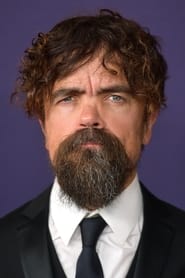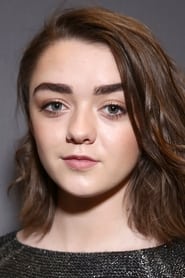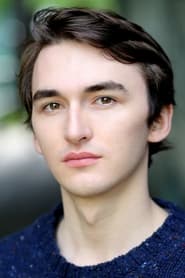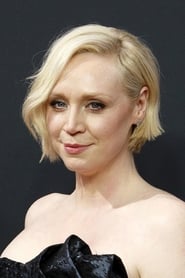
Ask Your Own Question
What is the plot?
In the deleted scenes from Season 8 of Game of Thrones, the episode opens with a scene featuring Jon Snow and Tormund Giantsbane. They are seen in the aftermath of the Battle of Winterfell, discussing the losses they have suffered. Jon expresses his grief over the fallen, particularly those who fought bravely against the Night King. Tormund tries to lighten the mood, reminiscing about their time beyond the Wall and the wildlings' resilience. This moment highlights Jon's heavy heart and sense of responsibility for the living, while Tormund's humor serves as a coping mechanism for the trauma they have endured.
The next scene shifts to Daenerys Targaryen in the aftermath of her victory. She stands on the battlements of Winterfell, looking out over the remnants of the battlefield. Her expression is a mix of triumph and sorrow as she reflects on the cost of the war. Tyrion Lannister approaches her, and they engage in a conversation about the future of Westeros. Daenerys reveals her determination to rule justly, but there is an underlying tension as Tyrion subtly questions her methods and the loyalty of her remaining allies. This exchange underscores Daenerys's ambition and the growing concern among her advisors about her increasingly ruthless approach.
In another scene, Arya Stark is seen in the crypts of Winterfell, mourning the loss of her family members. She kneels before the statues of her ancestors, visibly shaken by the weight of her past and the sacrifices made. Gendry arrives to comfort her, and they share a moment of vulnerability. Arya expresses her fears about the future and her desire to find her own path, while Gendry reassures her of his support. This interaction deepens their bond and highlights Arya's internal struggle between her identity as a Stark and her desire for independence.
The following scene features Bran Stark and Samwell Tarly discussing the implications of Jon's true parentage. Bran reveals that Jon is Aegon Targaryen, the legitimate heir to the Iron Throne. Sam is shocked but understands the potential consequences of this revelation. They discuss the importance of keeping this information secret, especially from Daenerys, as it could create a rift between her and Jon. This conversation emphasizes the weight of knowledge and the burden it places on those who possess it.
The final scene of the deleted scenes showcases a tense meeting in the Great Hall of Winterfell. Daenerys, Jon, Sansa Stark, and other key characters gather to discuss the future of the realm. Sansa expresses her concerns about Daenerys's intentions and the loyalty of the North. Tensions rise as Jon is caught between his love for Daenerys and his loyalty to his family. The scene ends with a palpable sense of unease, foreshadowing the conflicts that will arise as the characters navigate their complex relationships and the shifting power dynamics in Westeros.
What is the ending?
In the ending of Game of Thrones, Bran Stark is chosen as the new king of Westeros, while Sansa Stark declares the North an independent kingdom. Jon Snow is exiled to the Night's Watch for killing Daenerys Targaryen, who had become a tyrant. Arya Stark decides to explore west of Westeros. The series concludes with a sense of new beginnings and the establishment of a council to govern the realm.
As the final moments of Game of Thrones unfold, the scene shifts to the Dragonpit in King's Landing, where the surviving leaders of Westeros gather to decide the fate of the realm after the devastation wrought by Daenerys Targaryen. The atmosphere is tense, filled with uncertainty and the weight of recent events.
Tyrion Lannister stands before the assembly, advocating for a new form of governance. He proposes that instead of a hereditary monarchy, the leaders of the realm should elect their king. The camera captures the faces of the lords and ladies, each reflecting their own ambitions and fears. The scene is charged with a mix of hope and skepticism as they consider this radical idea.
Bran Stark, who has become the Three-Eyed Raven, is nominated as a candidate for king. His calm demeanor contrasts sharply with the chaos that has enveloped the realm. As he is chosen, the camera lingers on his face, revealing a mixture of acceptance and resignation. He understands the burden of leadership and the sacrifices it entails. The moment is pivotal, as it signifies a shift from the traditional power struggles of the past to a more collective approach to governance.
Sansa Stark, standing strong and resolute, asserts the North's desire for independence. Her declaration is met with a mix of admiration and concern from the assembly. The North, having endured so much, seeks to forge its own path, free from the influence of the Iron Throne. The scene captures her determination, highlighting her growth from a naive girl into a formidable leader.
Meanwhile, Jon Snow grapples with the consequences of his actions. After confronting Daenerys about her tyrannical turn, he makes the heart-wrenching decision to kill her to prevent further bloodshed. This act of love and duty leads to his own exile, a bittersweet resolution to his character arc. As he walks away from the council, the weight of his choices hangs heavily on him. The audience sees his internal struggle, torn between his Stark heritage and his loyalty to Daenerys.
Arya Stark, ever the adventurous spirit, decides to leave Westeros altogether. Her journey westward symbolizes her quest for identity and freedom. The scene captures her resolve as she boards a ship, looking back one last time at her family and the land she has known. Her departure signifies a break from the past and an embrace of the unknown.
The final moments of the series depict Bran as king, with a council of lords and ladies, including Tyrion as Hand of the King, working together to rebuild the realm. The camera pans out, showing the vastness of Westeros, now under a new leadership structure. The sense of hope and renewal permeates the air, suggesting that while the past was fraught with conflict, the future holds the promise of a different kind of governance.
In summary, the fates of the main characters are as follows: Bran Stark becomes the king of Westeros, Sansa Stark rules the independent North, Jon Snow is exiled to the Night's Watch, and Arya Stark sets sail to explore uncharted territories. Each character's journey concludes with a sense of resolution, yet leaves room for new beginnings in a world forever changed.
Is there a post-credit scene?
In the episode titled "Deleted Scenes from Season 8" of Game of Thrones, there is no post-credit scene. The episode primarily features various deleted scenes that were not included in the final cut of Season 8. These scenes provide additional context and character development, showcasing moments that were left on the cutting room floor. However, they do not include any additional narrative or a post-credit sequence that expands the story beyond what was presented in the main series. The focus remains on the characters and their interactions, offering fans a glimpse into the creative process behind the final season.
What deleted scenes feature Jon Snow's interactions with Daenerys Targaryen?
In the deleted scenes from Season 8, there are moments that showcase Jon Snow's conflicted feelings towards Daenerys Targaryen, particularly as he grapples with the implications of her claim to the Iron Throne and the consequences of their relationship. These scenes delve into his internal struggle, highlighting his loyalty to his Stark heritage while being drawn to Daenerys's vision for the realm.
Are there any deleted scenes that explore Arya Stark's journey after the war?
Yes, there are deleted scenes that provide insight into Arya Stark's emotional state following the war. These scenes depict her reflecting on her journey, her family, and her decision to leave Westeros to explore what lies west of the known world. They capture her sense of adventure and the weight of her past experiences.
What additional context do the deleted scenes provide about Bran Stark's role as the Three-Eyed Raven?
The deleted scenes offer further context regarding Bran Stark's transformation into the Three-Eyed Raven. They explore his understanding of time and destiny, as well as his emotional detachment from the events unfolding around him. These moments emphasize his struggle to connect with his Stark identity while fulfilling his role as a seer.
Do any deleted scenes elaborate on the relationship between Sansa Stark and Tyrion Lannister?
Yes, there are deleted scenes that delve into the evolving relationship between Sansa Stark and Tyrion Lannister. These scenes highlight their mutual respect and understanding, showcasing moments of vulnerability and shared experiences that deepen their bond, particularly in the aftermath of the war.
What insights do the deleted scenes provide about the aftermath of the Night King's defeat?
The deleted scenes provide insights into the emotional and political aftermath of the Night King's defeat. They explore the characters' reactions to the loss of loved ones and the burden of leadership, particularly focusing on how the surviving characters cope with their trauma and the new challenges they face in a post-war Westeros.
Is this family friendly?
The episode "Deleted Scenes from Season 8" of Game of Thrones contains content that may not be considered family-friendly. Here are some potentially objectionable or upsetting aspects:
-
Violence: The series is known for its graphic depictions of violence, and deleted scenes may include moments of intense conflict or battle.
-
Death: Themes of death and loss are prevalent, with characters experiencing significant emotional turmoil over the deaths of loved ones.
-
Strong Language: The dialogue may include profanity and harsh language that could be inappropriate for younger audiences.
-
Mature Themes: The series often explores complex themes such as betrayal, power struggles, and moral ambiguity, which may be difficult for children to understand.
-
Emotional Distress: Characters may display deep emotional pain, grief, or anger, which could be upsetting for sensitive viewers.
Overall, the content is more suitable for mature audiences due to its intense themes and emotional weight.
























